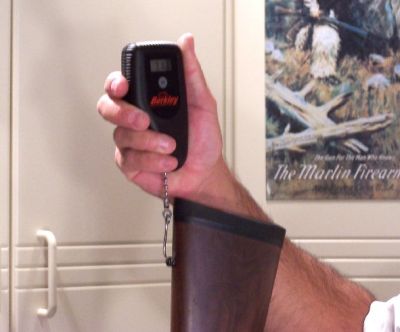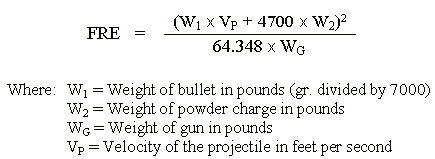
| Articles | Documents | Equipment | Events | Links | Membership | Miscellaneous | Scrapbook | Targets | What's New |
|
Recoil Management Through Intelligent Handloading | November 2004 | ||
| Dan Martinez
| |||
|
Lately, recoil calculation has become just as much
a part of my handloading as chronographing, group firing, or
energy calculation. Iíve found that I just donít care to put
up with more than about 20 foot-pounds of recoil in a rifle.
The interesting thing you learn once you start playing around
with recoil calculations, is that you really donít have to give
up performance to lessen recoil.
In the ďKaibab KidsĒ story, I
discussed how I tamed the recoil level of Samís .260 Micro
Hunter. For another good example, let me tell you about my
Sako 7mm Rem Mag. The first loads I fired through it were
various factory loads topped with 150, 165, and 175 grain
bullets. This seems to be the standard bullet weight range
for the 7mm RM. They walloped me pretty good. I didnít like it.
Then I started handloading for it. First, I picked a 140
grain bullet, which will help some. But then I also picked
a faster powder than is normally used to get top velocity.
Examples of such powders are IMR 4064 and 4320; Hodgdon H4895
or Varget; Alliant Reloder 15. Note that Iím not talking
about the special download powders such as XMP5744 and SR4759.
This does two things: First, since maximum pressure builds
sooner, the charge weight must be smaller; second, in most
cases, you wonít reach the top velocities possible, as you
would with a slower powder. So now, Iíve reduced 1) bullet
weight, 2) powder weight, and 3) velocity.
The total amount of ďejectaĒ that is thrown out of the case
mouth, and the speed at which it is thrown out determine the
amount of recoil you get. I was able to reduce the recoil
from about 21 foot-pounds, down to around 16 foot-pounds.
Thatís a 25% recoil reduction.
Yet, I was still getting over 3000 fps with my handload. Some
may argue that a 140 grain bullet is on the light side for a
7mm mag. On the other hand, most experts say that a deer-hunting
bullet, in whatever caliber, should ideally have a sectional
density of around .250 for good penetration. Guess what, the
140 grain 7mm bullet has a sectional density of .248. This puts
it in the excellent company of the 165 grain .30 cal which has an
SD of .253. In my view, shooting a heavier load than you really
need just subjects your body to unnecessary wear, tear, and pain.
Iíve read tales of long time gunwriters who have suffered very
serious injuries from taking too many heavy-recoil shots. Tales
of detached retinas, destroyed shoulders, spinal injuries even.
Iím less and less willing to take the risk. At least 90% of what
needs to be done in the hunting fields can be done more than
adequately for 20 foot-pounds of recoil or less.
Having said that, I must admit that I have one rifle in my armory
that normally exceeds the 20 foot-pound recoil level, my .444 Marlin.
My favorite handloads for this rifle churn up in the neighborhood of
25 to 27 foot-pounds. Yet, this rifleís kick doesnít bother me as
much as those full-power 7mm mag rounds do. I think it has to do
with the velocity of the kick, and not simply the maximum magnitude
of the recoil. The Marlin throws its much heavier bullets almost
1000 fps slower then the 7mm.
Alright, so exactly how do you calculate the recoil of a load? You
need to know the following four figures: 1) the weight of the bullet,
2) the weight of the powder charge, 3) the velocity out of your gun,
4) the weight of your gun.
Appendix B of Lymanís 48th edition Reloading Handbook (page 398) gives
the formula for Free Recoil Energy:
Iíve put the formula into a computer spreadsheet to make the
calculations easy. When I need to make a new calculation, I
just make a copy of an old calculation, and change the input
numbers as required.
One of the keys to making the calculation, is to accurately know
the weight of your gun. The best tool Iíve found for this is a
digital fish scale. The one I have is a Berkley, which will weigh
up to 20 pounds or so, and cost only 20 bucks or so. I found that
you can generally hook into a sling swivel, or you can use a string
loop through the trigger guard.
So even without a muzzle brake, you can significantly cut the kick,
yet still have plenty of performance.
| |||
| If you enjoyed this story, or found it useful, please consider clicking here to join the NRA at a discount of $15 off the normal membership cost. You will be supporting both this website and adding your voice in support of the Second Amendment. Thank you very much. |

|

|
|

